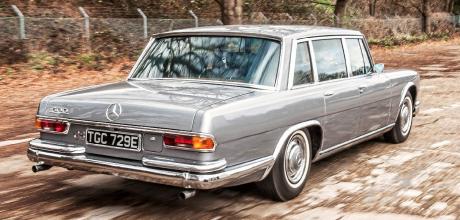1963 Mercedes-Benz 600 W100
Sixty years ago, Mercedes-Benz launched the ultimate luxury saloon. Today, we drive one and meet the men who sold, serviced and restored the 600s of the Sixties’ glitterati.
Words RICHARD MASON
Photography LAURENS PARSONS
Inside the car that conveyed pop stars and dictators – the Mercedes-Benz 600 W100
Landmark Luxury
As the Mercedes-Benz 600 hits 60, we drive one and meet the men who sold and serviced the luxury behemoth. In issue 600, naturally...
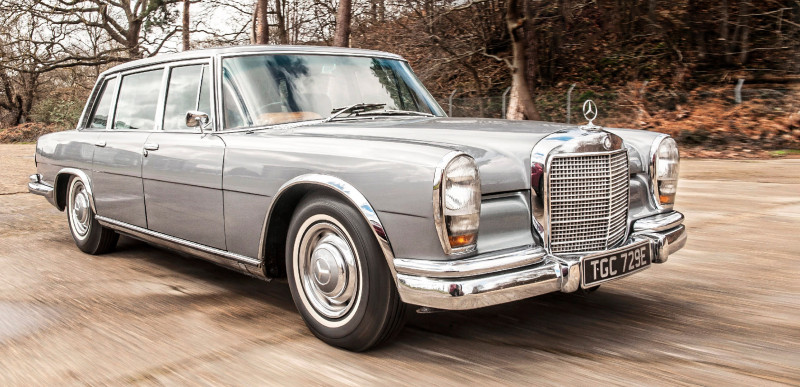
No other car from this era can prepare you for the 600 initiation. If you’re not intimidated by the scale of David Salamone’s example from the outside, wait until you slip behind the slim wheel and contemplate aiming that vast bonnet through bustling traffic or narrow roads. We’ll get to that, and we’ll hear what it was like to deal in these cars and maintain them back in the day. But first, the big question – why did Mercedes-Benz create it?
The brief for the 600 was simple, if not so straightforward to execute – Rudolf Uhlenhaut, director of passenger car development, stipulated they had to create a car that was indisputably the best luxury car in the world. Before World War II, Mercedes was a Daimler-Benz brand that had been a byword for plutocratic luxury – and here, hardly ten years after the end of the war, Mercedes aimed to be top dog again. No pressure then.

It was no mean feat that the company’s talents were equal to its lofty ambition, producing a car that symbolised the ultimate in perfection and status. The achievement was equal to the size of the car, a commanding 5.54 metres long. The factory model code was W100, but it was also given the Grosser moniker, meaning ‘Grand’. Vast interior space meant it could comfortably accommodate tall people, no matter which seats they occupied.
The 600 also had the best possible suspension, minimal body roll while cornering, comfortable and adjustable seats, the ultimate in heating and ventilation systems, and power assistance for all manual operations – with the whole package rolling down the road in spooky silence. Performance was at an equally elevated level, with power provided by Mercedes’ first V8, a fuel-injected 6.3 litre producing 247bhp. The original 1930 Grosser had a 7.6-litre in-line eight-cylinder. Complementing all this high-end hardware was an almost limitless options list, including a driver’s partition, refrigerated drinks cabinet, television and even a record player.
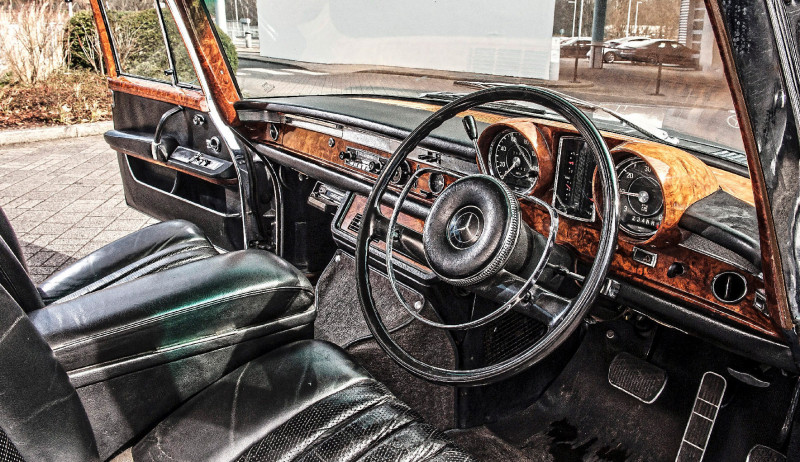
By 1959 Mercedes had a prototype running, although perfecting it took another four years. Upon its launch at the Frankfurt Motor Show in 1963, only three 600s existed. Nevertheless, demand surged from the elite in all segments of society – captains of industry through The Beatles and Elvis Presley, the Pope and a whole slew of heads of state, some of whom you might not want recorded in the log book.
Now, 60 years later, the Grosser attracts curiosity wherever it’s seen – and it’s rarely seen. Only 2677 were built during the 18- year production run, which in itself is a record for a single model without a facelift. There was a choice of two chassis lengths – either standard, of which 2190 were built, or the 70cm longer Pullman which found 428 buyers plus a further 59 Landaulets. There were 272 right-hand drive versions produced of all types.
Optimum comfort is derived from independent pneumatic self-levelling suspension, which can raise ride height by up to two inches and comes with three firmness settings. The 600 also showcased an industry first, by using hydraulics to power a variety of items: the front and rear seats, self closing doors, sunroof, heater flaps, bootlid and windows. Why hydraulic?
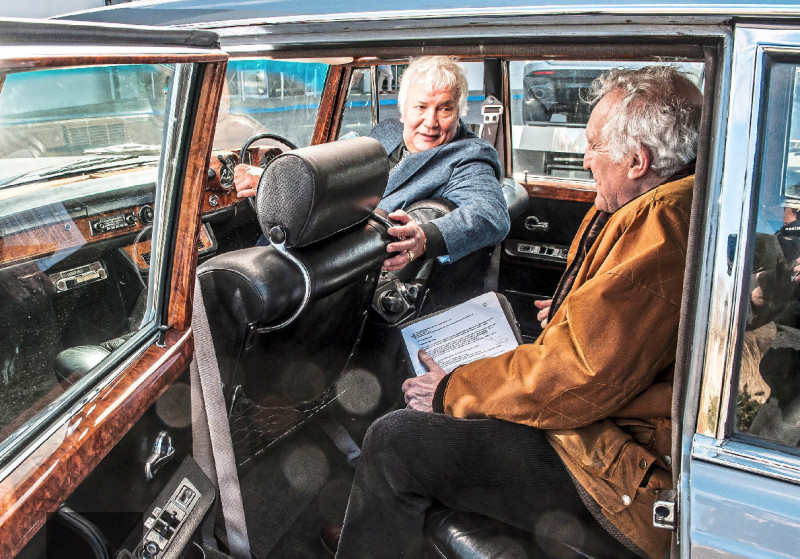
Electric would have required a second battery thus adding weight. Hydraulic operation is also noiseless, compact and light, characterised by opulent smoothness. And with Uhlenhaut’s diktat, opulence had to be exuded in every aspect, including minor innovations we now take for granted, like door mirrors adjustable from the inside and interior light delay. Mercedes took the car to a whole new level of ultra-luxury. And today, taking us back to the Sixties are two people who sold and maintained these opulent titans.
In the mid-Sixties, Derek Singleton worked in Kent at a Mercedes dealership and subsequently in Bayswater, London with his own showroom developing a niche business for used 600s. In 1968 he even had the London Mercedes distributor’s demonstration 600, plus chauffeur, on loan for his wedding day.
Derek explains his strategy, ‘Back then dealers were cautious about taking a 600 in part exchange. They knew how complex the car was, with the potential for costly repairs. Remember, car dealers were expected to give at least a three-month/3000-mile warranty, albeit parts only, but they might have to pay some or all of the labour costs in order to retain prestigious customers.

‘Meanwhile, the importer, Mercedes-Benz (GB) Limited, had set up a specialist unit in Brentford, West London, to service 600s from all over the country. This only added to the perception of Mercedes’ 30 or so UK dealers that this was no ordinary car to maintain. It was considered preferable to have a small, dedicated team of people working on the 600 to provide a better and quicker service time for the undoubtedly influential customer. In any case, not all garages would’ve had the space or ramps big or strong enough for a 600. However, my business partner Peter Craddock and I had a good knowledge of the 600 model. We were well positioned in Bayswater to develop a profitable used car business buying and selling them.
‘Very often other dealers would approach us to underwrite the 600 they had been offered in part exchange and we would subsequently buy the car from them. One six-door Pullman we bought had belonged to singer Rod Stewart. It had a massive TV aerial on the roof just above the windscreen. Another more exotic version was a rare Landaulet with hydraulically-operated folding rear roof, originally bought by the President of Sierra Leone. When he no longer needed it, as his replacement six-door Pullman had arrived from Sindelfingen, his people decided to sell it in Britain, thinking right-hand drive was unlikely to be so attractive in the left-hand drive markets. In December 1974 we were offered the car by the importer and immediately went to view it. Having covered only 13,000 miles, it was in almost-new condition. We were pleased to negotiate a satisfactory purchase price on condition that before we sold the car we would remove the presidential crest on the side.

‘Despite it being right-hand drive, I thought it more likely that it would sell in the largest 600 market, the USA. Directing my efforts there, I was rewarded by absolutely no interest other than one gentleman in Texas who asked if we’d be interested in buying his own 600. Fortunately for us, Chrysalis Records was looking for a suitable car for David Bowie to ride around in on his 1975/1976 grand European tour – the imposing Landaulet was perfect, with its retractable rear hood. Unfortunately for David, when he was standing waving to fans from the car in London, one photo made it look like a fascist salute. Of course, that was the photo that made it into the next day’s newspapers.’
Derek says that in all his years of trading 600s they were incredibly reliable. ‘They were hand-built using the best quality materials, and we never really felt that we were taking much of a risk in dealing in used ones. One three-year-old 600 that I ran for a while had a slight whine from the differential at around 50mph. I opted to replace it, because I knew I’d sell it and I didn't want any customer complaints. To my surprise, Daimler- Benz AG supplied a new rear axle assembly complete with brake discs and calipers. They charged the same amount they originally quoted for replacing the differential alone, despite the fact that the car was long out of warranty. They said the diff shouldn’t have developed a noise.
‘These cars were sold in such small numbers that by 1975 right-hand-drive examples were only built as a special order, with the factory quoting a specific price for each order. Actually 15 per cent of the entire production run was sold in just one year, 1965. There’s always been speculation about Daimler-Benz ever making a profit on them. No doubt the development costs were considerable. Being a low-volume, hand-built car with a hugely fluctuating production run, but nevertheless requiring all the servicing spares, it’s difficult to see how the 600 would've contributed to the bottom line.
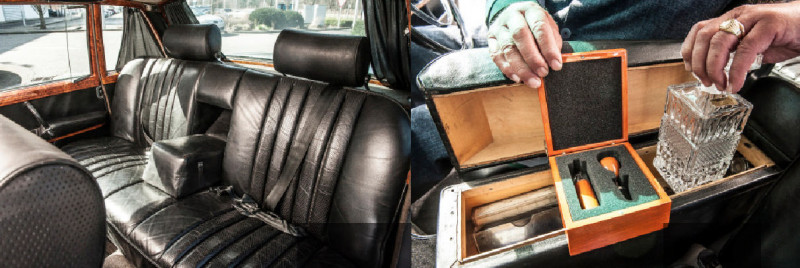
‘Maybe that’s missing the point. The 600 put the brand on the map in a way no other car has ever achieved in so short a time.
Look at all the media coverage it got with all the famous owners from the worlds of politics to showbiz. No amount of spending on advertising could ever have achieved that. As the supreme luxury automobile status symbol, the 600 made an incalculable contribution to the overall success of Mercedes-Benz.’
Derek is at pains to point out that the smaller 600 was never referred to as a short wheelbase as people often do today, but instead ‘standard’. The longer wheelbase 600 is the Pullman. Woking Motors, where Joe Salamone started his apprenticeship, was one of the garages that didn’t send 600s to Brentford for servicing, ‘We had a lot of celebrities living roundabout and many had Mercedes. I remember John Lennon, George Harrison and Ringo Starr bringing their 600s in for servicing. In the early days of his Pullman ownership, John Lennon came in complaining, ‘This car is shaking my head off.’
It didn’t take us long to find flat spots on the reinforced tyres. John wasn’t using the car much and leaving three tons of car stationary inevitability damaged the tyres. We suggested he get one of his people to move the car regularly. Talking of tyres, we had instances of customers replacing worn tyres with normal ones which would burst. They would then complain there was something wrong with the car, not realising Mercedes had the 600’s tyres specially designed to take the weight and only Fulda and Continental brands could cope.
‘Another time I was putting John’s Pullman on the ramp for inspection, not realising there were twin aluminium TV aerials underneath the body, not on the boot or roof. Had I known, I would have raised the pneumatic suspension to get more ground clearance. So up I go on the ramp and there’s this grinding sound as one of the aerials fouls the ramp and is bent back. Anyway, I straightened it and then bent the remaining kink into shape with pliers. I tested the TV and it still worked.
‘Apart from the pneumatics and hydraulics, servicing a 600 was straightforward, there was just more to do on them. Servicing intervals were every 3000 miles; reset the plugs at 6000, a major service at 12,000, then at 36,000 change the gearbox and axle oil. The fuel filters were changed at every service because the injection system needed the cleanest fuel possible. Every 12,000 miles we’d change the points and plugs, set the timing, the idle, the mixture, there were so many things to adjust. For example, it had five V-belts to check – they drove two alternators, an air-conditioning pump when specified, a cooling fan and then pumps for the pneumatic and hydraulic systems.
‘In those days, the pneumatic and hydraulic systems were reliable if the correct maintenance was followed. With the pneumatic system, we had to put methylated spirit into the airbox that fed the system to prevent ice forming which could damage the valves. The valves typically lasted years. We found the 600 to be a very very reliable car, with no warranty issues. The bodywork also stood up to the elements well – rust was never a problem. The hydraulic system needs caution when work is needed, because the pressure in the system is about 3000psi – enough to take your thumb off. You have to know what you’re doing. Even when the engine is off pressure is stored in the system to allow for the windows to be opened 10 times. So we can only work on a car when the pressure is reduced to a safe level. It has to be that high to operate all the components.
‘I reckon there was a lot of aircraft technology in the hydraulics. Incidentally, Mercedes supplies wooden pegs in the spares kit in case the window hydraulics fail. The idea is the pegs are gently tapped in position to keep the windows shut. The ventilation system is complex, because two systems are needed for such a large car – especially if there is a divider between driver and passengers. Basically, it’s a split system with hot water pipes running through to the rear and a split air-con set up. On the C-pillars are louvres to take air in for the rear passengers. If you’re in the front and want more air, there are opening quarter lights.
‘When I bought my own 600 in 2001, only the body needed painting – there was no rust. The engine was a different story, because it had not been run in 21 years – the pistons were rusted in the bores, necessitating an engine rebuild. Now it’s a beautiful car and I’m really looking forward to taking it to the largest ever gathering of 600s in the UK, at Mercedes-Benz World on 1 October. And, just as importantly, I’ll be reunited with three 600s I’ve worked on: John Lennon’s Pullman, George Harrison’s white standard 600 and Jeremy Clarkson’s green standard 600.’
Sliding into the driver’s seat of Joe’s 600, I’m in awe of the view down the bonnet – a colossal expanse of shiny metal with the extra-large three-pointed star rising up like a monument. The cabin is impressive, with acres of wood veneer, chrome trim and sumptuously well-sprung seats. Back in the Sixties some commentators called the interior stark compared to a Rolls- Royce. Not from where I’m sitting. Adjusting the hydraulically-operated seat is simple and naturally silent. The main controls are within easy reach. Rear view and door mirrors seem tiny by modern standards, but the driving experience is a revelation.
Slipping the gear selector from park to fourth — there’s no ‘D’ position – automatically disengages the parking brake, another innovation. There’s a fair clunk as the transmission engages. Select ‘4’ and the 600 uses all four ratios; choose ‘3’ or ‘2’ and it won’t go higher. As an alternative to kickdown, you pick a lower ratio, but there’s little need with 369lb ft of torque available at 2800rpm. The throttle response, via a rod linkage set-up, is precise and light, with swift progress when the accelerator is pushed to the plush carpet. It will deliver 60mph from rest in about nine seconds – impressive for such a heavyweight. Holding the slim steering wheel is a reminder that 60 years have elapsed, nevertheless responsiveness to steering inputs is bang up to date within the constraints of a recirculating ball system.
Our drive today includes a very bumpy section of the Brooklands race track, which the 600 deals with nonchalantly, soaking up the bumps to leave passengers unruffled, subjected to no squeaks or rattles. As I acclimatise to it, the 600 doesn’t feel like a big car – either in length or weight. In fact, agile and nimble are words that spring to mind. Slim pillars give panoramic visibility, vital in a 5.5-metre-long car, and the brakes are another reassuring surprise – operated by a pressure servo as opposed to a vacuum, they’re powerful yet progressive.
I’m reminded of dealer Derek Singleton describing driving the 600 back in the Sixties as ‘Going by jet rather than piston engine plane, such was its speed and composure’. The driving experience is majestic, cocooned as you are in rich gloss wood trim and sumptuous upholstery, in command of the finest materials and technology. You don’t get the luxury of a headrest, those were reserved for the passengers.
Experiencing the 600 as a passenger lounging in the rear reclining seats, invisible behind the curtains (the only nonpowered item) would certainly elevate your mood – but nothing beats driving the 600 to appreciate the incredible engineering development it represents for its era. No wonder the great and the good with the means to buy a 600 did exactly that.
Pneumatic self levelling suspension doing what it does best on Brooklands track.
No shake rattle and roll for cocktails stowed snuggly in centre console. Hydraulically operated reclining rear seats and windows — only the. curtains are manual.
TECHNICAL DATA FILE SPEC 1963 Mercedes-Benz 600 W100
- Engine 6329cc V8, sohc per bank, mechanical fuel injection
- Max Power 246bhp @ 4000rpm
- Max Torque 369lb ft @ 2800rpm
- Transmission Four-speed automatic, rear-wheel drive
- Steering Power-assisted recirculating ball
- Suspension Front: independent, wishbones, air units, rubber springs, telescopic dampers. Rear: independent, low-pivot swing axles, air units, auxiliary springs, telescopic dampers
- Brakes Servo-assisted discs front and rear
- Weight 2700kg
- Performance Top speed: 129mph
- Acceleration 0-60mph: 9.7sec
- Fuel consumption 11mpg
- Cost new £8926
- Classic Cars Price Guide £105,000
Joe’s no stranger to 600 mechanicals after 60 years in the business. Joe explains drivers lack of headrest is a safety feature to avoid sleepiness.
Bowie was no dictator… but plenty who rode in Laundaulets were Bowie’s Landaulet before the President of Sierra Leone’s crest was removed. Note flag holder on front wing.
Air suspension smooths out pockmarked Railway Straight Rod Stewart’s 600 Pullman’s roof-mounted TV aerial less accident prone than John Lennon’s.
The 600 doesn’t feel like a big car, in fact ‘agile’ and ‘nimble’ spring to mind
Functional Teutonic interior with just enough opulence. Steering wheel adjustable via ribbed boss. Joe (in the snazzy tie) remembers working on 600s for the Beatles.
Courtesy light with its delay feature was another clever Mercedes first.
Veneer and chrome completely original, belying the car’s age.


